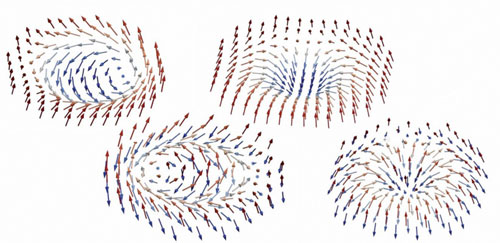| Sep 26, 2020 | |
Roadmap points out the directions for quantum materials(Nanowerk News) The term “quantum materials” was introduced to highlight the exotic properties of unconventional superconductors, heavy-fermion systems (materials with unusual electronic and magnetic properties) and multifunctional oxides. |
|
| More recently, the definition has broadened to cover all the materials that allow scientists and engineers to explore emergent quantum phenomena and their potential applications. | |
| This broadening of the concept puts together diverse fields of science and engineering, from condensed-matter and cold-atom physics to materials science and quantum computing. Prof. Feliciano Giustino (The University of Texas at Austin) and ICREA Prof. Stephan Roche (Catalan Institute of Nanoscience and Nanotechnology) proposed themselves to capture a snapshot of the latest developments in this vast and fast-moving research area. | |
| With this aim, "The 2020 Quantum Materials Roadmap" review has been published in Journal of Physics: Materials. | |
 |
|
| Typical skyrmion spin textures where the spin texture is indicated by the arrows. (Image: ICN2) (click on image to enlarge) | |
| Twenty-nine international leading experts (six of them from BIST centres: Stephan Roche, Adriana I. Figueroa, Regina Galceran, Sergio O. Valenzuela and Marius V. Costache from ICN2, and Pol Forn-Díaz from IFAE) have participated in this roadmap sharing their vision and expertise in different areas: complex oxides, quantum spin-liquids, cuprate superconductors, topological insulators, superconductor and semiconductor qubits, 2D hyperbolic materials, spin torque materials and magnetic skyrmions are just some of the fancy named objects under study by the experts, which shows to what extent the term "quantum materials" has indeed broadened. | |
| The roadmap also includes work on machine learning, a tool that is becoming increasingly important to catalogue, search and design new quantum materials. | |
| Understanding well all these materials is not only of fundamental interest, but it might also lead to some technological advances, such as the very expected quantum computers, even in a more robust version (the so-called non-abelian topological quantum computers). | |
| The authors expect that, by offering a big picture of the emerging horizons in quantum materials research and by pointing out the directions where further work and analysis is needed, this roadmap will foster new researches and interdisciplinary collaborations to address these and other as yet unexplored issues. |
| Source: ICN2 | |
|
Subscribe to a free copy of one of our daily Nanowerk Newsletter Email Digests with a compilation of all of the day's news. |
